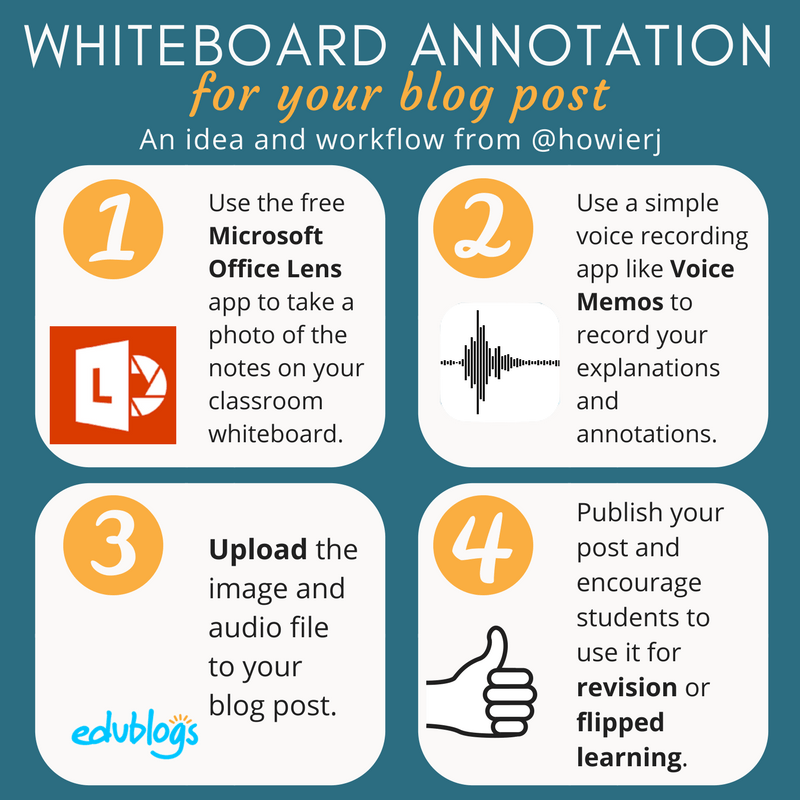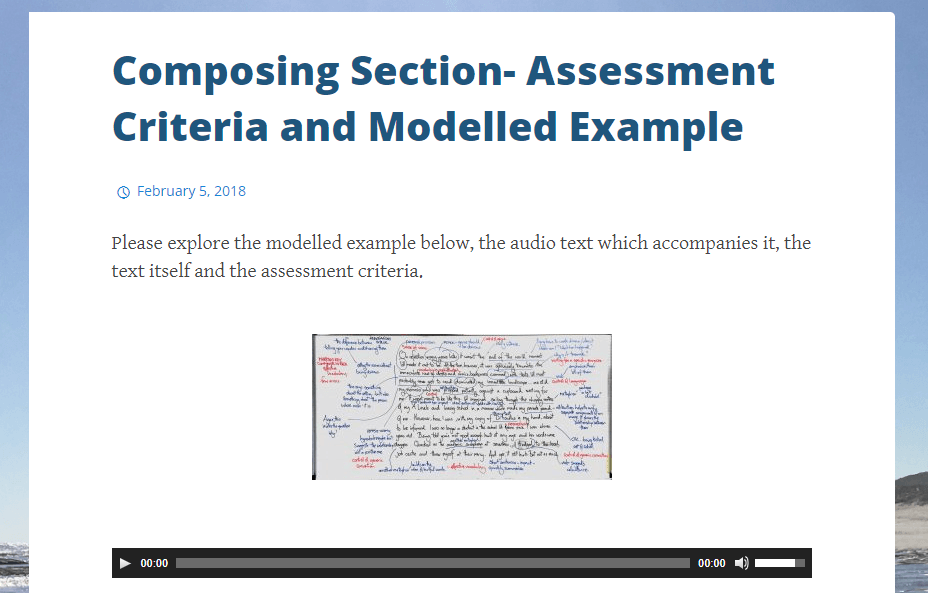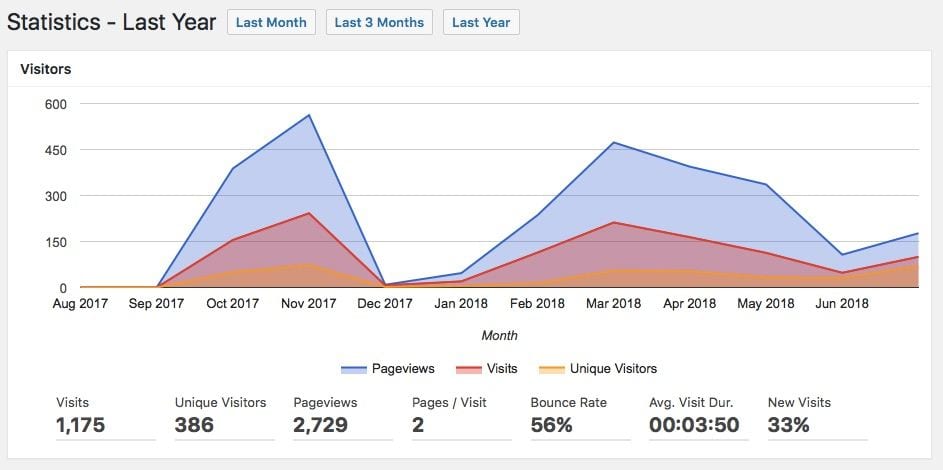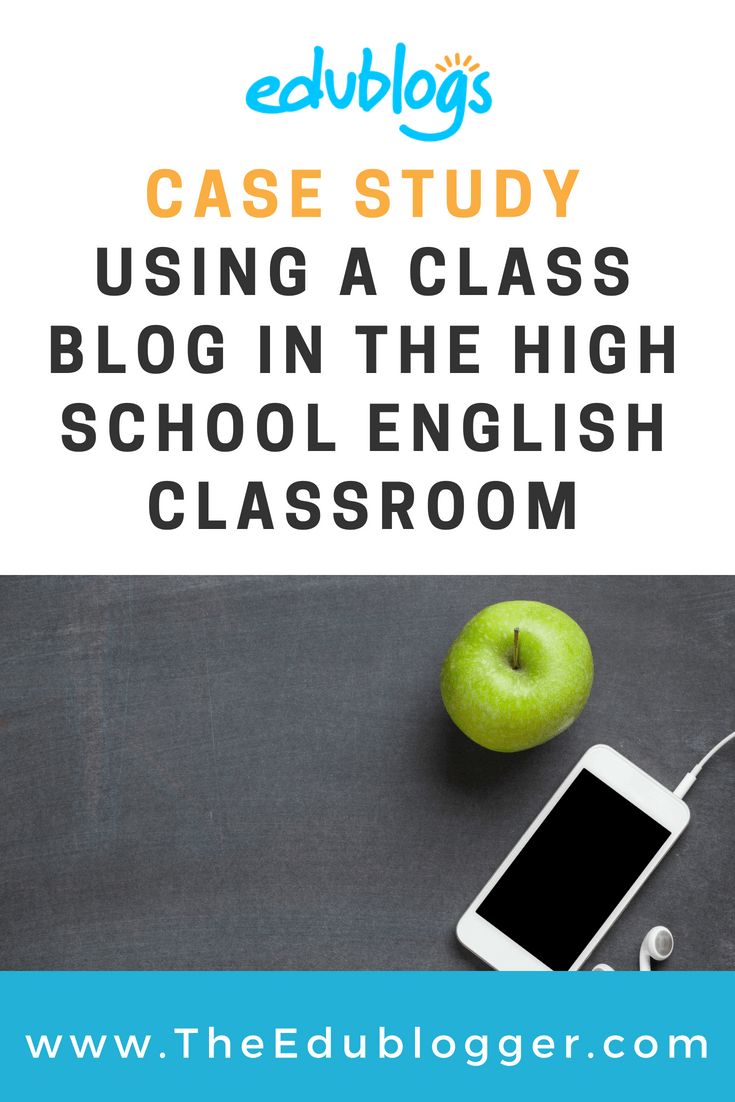 This is a guest post by high school English teacher Howie Jakeway.
This is a guest post by high school English teacher Howie Jakeway.
Howie is Head of Learning Area, English and Languages, at St Stephen’s School in Western Australia.
St Stephen’s School has a CampusPress network that boasts some impressive blogs for all sorts of classes and extra-curricular activities.
Howie wrote this article about the transformative nature of class blogs in the English classroom for The English Teachers Association of Western Australia. We’re republishing it with permission.
Note: Throughout this post, Howie mentions ATAR. This is the university entrance ranking score for students in their final year of school in Western Australia.
Getting started with classroom blogs
As an undergraduate at university in the early 90s, I remember being introduced to the thing that would indelibly change the world; change the ways in which we think and interact with the world around us.
I stared blankly into a computer screen while my fellow student proudly informed me that I could ‘search’ for anything I needed to know on something called the Internet.
I honestly didn’t know what I wanted to know, and anyway, I was sat in the university library where there were books on everything I needed to know.
In short, I studiously ignored the internet phenomenon for the next decade or so and it didn’t permeate the ways in which I operated, either in the English classroom or in the outside world. However, the Internet –and our relationship with it –has changed the landscape of teaching indelibly, transforming the ways in which we teach, work and interact with our students.
It was on these shifting sands of contemporary pedagogy that my work with classroom blogs was developed and it’s fair to say they’ve revolutionised my students’ relationship with the subject.
Embracing the benefits of blogging
I currently run two classroom blogs:
- one for my Year 12 ATAR English students, and
- another for my Year 12 ATAR Literature students.
In previous years, I’ve run them for Year 8 classes to equally positive effect.
In many respects, these class blogs –and they operate more like a class website than a blog –have had a galvanising effect on student engagement, the ways in which I can exemplify my teaching and learning points as well as being able to engage the wider school community (parents in particular) in framing the subject in a more explicit manner.
My Year 12 ATAR English blog is a reasonably clear example of how embracing the online world can allow for a different approach to our classroom practice.
Resources at students’ fingertips
Modelled work
We all know that effective modelling is central to effective teaching and my blog contains many examples of sample paragraphs, guided reading, exemplar material, practice questions as well as a range of resources typically used with any English class.
What my blog allows me to do, however, is to store these resources in a way that allows students easy access to them, including being able to download screenshots of modelled examples written by me on the whiteboard.
Sometimes, there’s a transient nature to the work we produce in the classroom. All too often these examples are wiped from the board in preparation for the next class to use the room. At the very least, my students have access to these whenever they need them.
In the image below, the screenshot of my whiteboard is downloadable. My teaching and learning points are then exemplified below as a series of dot points. The annotations themselves offer a deconstruction of both the assessment criteria and the structure of the body paragraph.
My students were then able to use the modelled example as a way of constructing their own responses; framing learning in this manner allowed me to consolidate my teaching and learning points as well as accelerate the pace of learning in the classroom.
Students don‟t need to copy from the whiteboard, they don’t need to slow the pace of their own learning down and they can interrogate (and apply) the model at their own point of need.
Supporting students with sound files
Recently, I’ve started adding sound files to my class blog for students who need an additional framework from which to work.
These sound files, recorded on my mobile device, work particularly well for a registered blind student in my Year 12 ATAR Literature class, as well as students who have specific accommodations where information needs to be ‘chunked’ for them.
Therefore, a student in my class is able to not only download the screenshot of the whiteboard, they can also listen to a short summary of the main teaching and learning points from the lesson.
It would, of course, be unsustainable to do this for every lesson and I don’t. However, when I need to consolidate an aspect of my work with the students, I can do so in a way that differentiates the learning for all students in a relatively clear manner. The implications for learning beyond the classroom are obvious.
Here is an example of a modelled piece with audio:
Blogging and parents
The class blog has also allowed me to engage with our parent community in a more purposeful manner, particularly where students have required intervention.
Parents are able to engage with Year 12 ATAR English in a direct manner, they’re able to see what their child is doing in class and to have those important conversations at home in a (potentially) more productive way.
I’ve yet to meet a parent who was not supportive and appreciative of how visible these class blogs make our teaching and learning in English.
In many respects, I can invite parents into my classroom without them leaving their house, their office, their place of work.
Reaching beyond the classroom
The statistics from the English blog demonstrate that its impact has gone beyond the small class of students.
Students in an English class at another campus 12km away also use the blog to help with their studies. The reach could be even further than this as students from across the state look online for resources to assist them with their course.
As the graph demonstrates, the blog is accessed regularly during school terms and peaks at key times such as during exam revision.
Finding the time
Of course, the counter-argument is that while class blogs look wonderful, are engaging and work to engage students across the age and ability spectrum, there is a time implication to much of this.
It does take time to produce the modelled examples in class but who doesn’t do this anyway?
I use Microsoft Office Lens (it’s a free app available for both Android and Apple devices) to take a quick screenshot of my whiteboard –which saves the students themselves trooping up to do likewise –and I Airdrop it to my MacBook, all of which takes less than a minute.
From there, the image can be downloaded from the class blog very quickly, which means it’s accessible within the lesson for students to work from on their own devices.
The dot point exemplification and sound files sometimes take a little longer –sometimes they have to be completed after the lesson –but I’ve always viewed them as an investment in my students’ learning and they do save time further down the track when students are using the models to produce their own responses.
Having run class blogs for a few years now, the time it takes me to maintain them is negligible.

Conclusion
Our students live in an online world that is alien to the one I grew up in.
Our students are always connected and the online world is deeply embedded in their experience of learning, from their furtive days in the primary school to the expectations and pressure that ATAR courses bring.
My class blog is but one way in which students’ experience of a subject can be transformed by embracing learning beyond the classroom.
By personalising the learning process, by inviting parents into the virtual classroom, by supporting students who require those frameworks to succeed, blogs have a significant role to play in transforming the ways in which a subject is perceived.
What do you think about the ways Howie is using a blog to complement his classroom programs? Do you have any questions for Howie? Leave a comment below!






